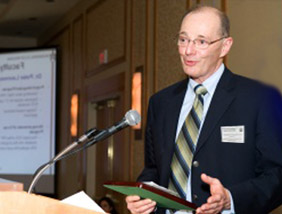| The University of British Columbia | | |
| |
| |
| |

| |
| Research Interests | ||
1. Improving the human interface to machines and computers. This forms the motivation behind the specific interests below. To accomplish this, one is required to consider not only the technical issues involved in the environment (including the machine, or computing device), but also human factors related to the user's human perception and movement.
3. Using computer vision as an important component of a measurement system. Vision is one of the most powerful sensing systems animals possess. It is widely used in measurement system design. In particular, applications to locating the position and orientation in space of a camera (carried on a person or robot) using only landmark-free environmental scenes, and measurement of the locations of objects in the environment are of interest (see Research Projects page). 4. Direct brain interfaces via EEG signals as communication channels for the spinal cord injured. It has been proposed that the ultimate interface to the human is a direct neural connection. Such an interface poses many problems. Neural signals picked up from the scalp using EEG electrodes form a less invasive but noisy window into neural activity in the brain, but there is nevertheless movement-related information that can be extracted from EEG signals (see Research Projects page). The first steps that indicate that single-trial movement related EEG signals can be used for this purpose this were taken by a previous UBC EECE graduate student, Dr.Gary Birch (now with the Neil Squire Foundation). 5. Functional approximation methods for finding predictive relationships between measured physical inputs to a complex system and its output(s). Very often, the relationship between physical causes and effects appear to be too complex to model. Simple models do not capture the relationships. Neural nets have been used to find such relationships, but as the number of physical input variables grows, the required training data also grows. We have been investigating several approaches to solve this problem for specific types of problems of interest to industry. One of our previous graduate students (Dr. Greg Grudic) made substantial progress in this area during his doctorate here.
|
||
| Peter D. Lawrence, Ph.D., P.Eng., FCAE | Phone: |
(604) 822-5934 |
|
| Professor | Fax : |
(604) 822-5949 | |
| Dept. of Electrical Engineering | Email: |
see Department Web Page | |
| University of British Columbia | |||
| Vancouver, B.C., V6T 1Z4 Canada |
2010 © The University of British Columbia, all rights reserved. | Legal / Privacy
Website Design and Development by: Nasim Jahangiri
